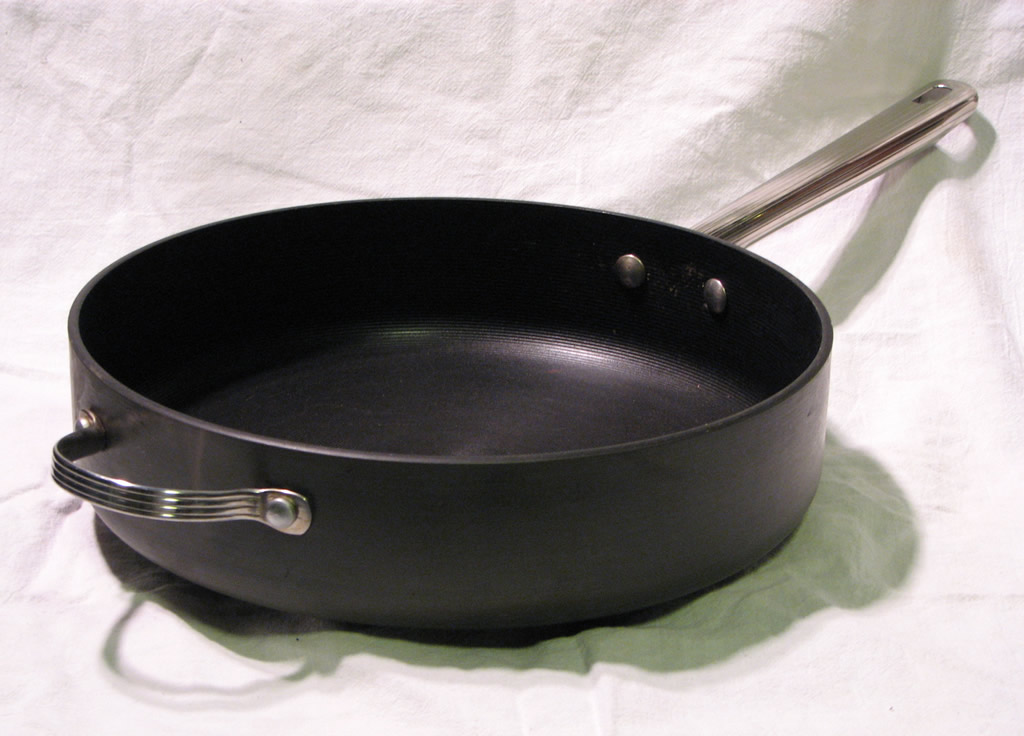I continue to see coloured Saw guides brightly lighting up the walls of Sawmills like decorative art. The last time I checked, Saw guides are used in a precision industrial application for the accurate cutting of lumber. They are also a major expense. I briefly touched on this in an earlier blog, “Do Saw guides come in Color?” So why are there so many companies buying colored saw guides?
It is of great concern to me since Industrial Hard Coat Anodizing, also known as Type 3 Engineering Hard Coat Anodizing, only comes in one color—grey. Yet I’ve seen red, black and other colors out there on the mill floor. If something that’s anodized has color it means that it’s not Type 3, but Type 2. This anodizing is very thin and not very durable, evidenced by any aluminum electronic device you own that comes in color (think of your phone or tablet). You likely protect these devices from scratching by putting covers over them. Can you imagine this kind of coating in an industrial setting, such as a Sawmill? Type 2 coated parts may look nice for a short while, but they won’t last long.
Why is Type 2 Anodizing is still being used in Sawmills today? Here are my top 3 reasons:
- Saw guide down, creating a higher profit margin.
- Type 2 Anodizing is so thin that it’s easier for the manufacturer to try to make a more accurate saw guide.
- Type 2 Anodizing with colour may allow the Sawmill to differentiate between different sizes.
Oh yes! The fourth reason, “They look so pretty in color!” Boy I hope that’s not the reason, as I really had to stretch for that one.
Let’s explore the three reasons.
- Type 2 Anodizing doesn’t take as long to apply or require special procedures and conditions like Type 3 Engineering Hard Coat, therefore it’s naturally cheaper to apply. Type 2 anodizing allows manufacturers to reduce their cost of manufacturing (they may or may not pass these savings onto the customer).
- Type 2 Anodizing is so thin it allows manufacturers to attempt to make more accurate Saw guides. This means they don’t have to subject the Saw guide to another process to ensure accurate tolerance. Type 2 can only get 0.001” thick whereas Type 3 will get 0.004 to 0.005” thick. A four to five times thickness increase is far more durable but requires an additional process to deliver the best accuracy. The thicker the coating, the longer the Saw guide will last.
- Type 2 Colored Anodizing allows a sawmill to differentiate between different thicknesses or similar styles of saw guides. This is probably the one that we need to concentrate on the most. I believe this can be easily overcome in many ways; to differentiate between Saw guides we can use alternative methods such as engraving or painting in non-critical areas. I bet Sawmills have come up with a lot of ways to differentiate their Saw guides.
In every aspect Type 2 colored anodizing is inferior to Type 3 Engineering Hard Coat in an industrial setting like a Sawmill. We all know what impact sawdust can have on steel parts—it can even eat through chrome. So I’m sure you can easily imagine what sawdust, which acts like an abrasive, will do to Type 2, thinly coated, anodized aluminum Saw guides. So Type 3 coated Saw guides will not only be more abrasion resistant and tougher than Type 2, making it much harder to wear off, they will also last 2 to 3 times longer.
I think a great analogy resides in everyday aluminum cookware that you find in department stores. If cookware manufacturers could get away with the lower cost alternative of Type 2 coloured anodizing, they certainly would. However, as far as I’ve seen, they simply can’t because the consumer would quickly vocalize their complaints about the inferiority of their product. So if, as a consumer, you wouldn’t tolerate this lack of quality in your home, why would you tolerate it in your Sawmill?
Let me know your thoughts.
Author: Udo Jahn
Do you want the next article delivered to your Inbox? Subscribe here for ideas and tips on getting the most out of your mill.

